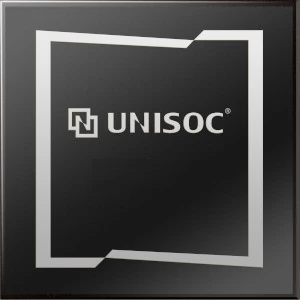Unisoc Tiger T612 vs Unisoc Tiger T700
The Unisoc Tiger T612 and the Unisoc Tiger T700 are two processors that offer similar specifications but differ in one crucial aspect.
Both processors have the same CPU architecture, featuring 2x 1.8 GHz Cortex-A75 cores and 6x 1.8 GHz Cortex-A55 cores. This configuration allows for a balance of high-performance tasks and energy-efficient processing, making them suitable for a wide range of applications.
In terms of the number of cores, both the Tiger T612 and the Tiger T700 have eight cores, providing ample multitasking capabilities for handling multiple processes simultaneously. They also share the same ARMv8.2-A instruction set, ensuring compatibility with modern software.
Where these processors diverge is in their Cortex-A55 cores. The Tiger T612 employs Cortex-A55 cores, while the Tiger T700 uses Cortex-A5 cores. This is a significant difference as the Cortex-A55 cores are more advanced and offer higher performance compared to the Cortex-A5 cores. The Cortex-A55 cores are designed to provide better power efficiency and improved performance per clock cycle.
Furthermore, both the processors are manufactured using the same lithography process of 12 nm, contributing to their energy efficiency and optimal thermal design power (TDP) of 10 Watts.
Considering all these specifications, it is evident that the Unisoc Tiger T612 with Cortex-A55 cores outperforms the Unisoc Tiger T700 with Cortex-A5 cores. The Tiger T612 has an edge in terms of processing power and energy efficiency, making it a more capable choice for demanding tasks and optimizing power consumption in various devices.
Overall, while the Tiger T700 may still be a competent processor, the Tiger T612 offers a better performance-to-power ratio with its advanced Cortex-A55 cores.
Both processors have the same CPU architecture, featuring 2x 1.8 GHz Cortex-A75 cores and 6x 1.8 GHz Cortex-A55 cores. This configuration allows for a balance of high-performance tasks and energy-efficient processing, making them suitable for a wide range of applications.
In terms of the number of cores, both the Tiger T612 and the Tiger T700 have eight cores, providing ample multitasking capabilities for handling multiple processes simultaneously. They also share the same ARMv8.2-A instruction set, ensuring compatibility with modern software.
Where these processors diverge is in their Cortex-A55 cores. The Tiger T612 employs Cortex-A55 cores, while the Tiger T700 uses Cortex-A5 cores. This is a significant difference as the Cortex-A55 cores are more advanced and offer higher performance compared to the Cortex-A5 cores. The Cortex-A55 cores are designed to provide better power efficiency and improved performance per clock cycle.
Furthermore, both the processors are manufactured using the same lithography process of 12 nm, contributing to their energy efficiency and optimal thermal design power (TDP) of 10 Watts.
Considering all these specifications, it is evident that the Unisoc Tiger T612 with Cortex-A55 cores outperforms the Unisoc Tiger T700 with Cortex-A5 cores. The Tiger T612 has an edge in terms of processing power and energy efficiency, making it a more capable choice for demanding tasks and optimizing power consumption in various devices.
Overall, while the Tiger T700 may still be a competent processor, the Tiger T612 offers a better performance-to-power ratio with its advanced Cortex-A55 cores.
AnTuTu 10
Total Score
GeekBench 6 Single-Core
Score
GeekBench 6 Multi-Core
Score
CPU cores and architecture
| Architecture | 2x 1.8 GHz – Cortex-A75 6x 1.8 GHz – Cortex-A55 |
2x 1.8 GHz – Cortex-A75 6x 1.8 GHz – Cortex-A5 |
| Number of cores | 8 | 8 |
| Instruction Set | ARMv8.2-A | ARMv8.2-A |
| Lithography | 12 nm | 12 nm |
| TDP | 10 Watt | 10 Watt |
Memory (RAM)
| Max amount | up to 8 GB | up to 4 GB |
| Memory type | LPDDR4X | LPDDR4X |
| Memory frequency | 1600 MHz | 1866 MHz |
| Memory-bus | 2x16 bit | 2x16 bit |
Storage
| Storage specification | UFS 2.2 | UFS 2.1 |
Graphics
| GPU name | Mali-G57 MP1 | Mali-G52 MP2 |
| GPU Architecture | Mali Valhall | Mali Bifrost |
| GPU frequency | 650 MHz | 850 MHz |
| Execution units | 1 | 2 |
| Shaders | 16 | 32 |
| DirectX | 12 | 11 |
| OpenCL API | 2.1 | 2.1 |
| OpenGL API | ES 3.2 | ES 3.2 |
| Vulkan API | 1.2 | 1.2 |
Camera, Video, Display
| Max screen resolution | 2400x1080 | 2400x1080 |
| Max camera resolution | 1x 50MP | 1x 48MP |
| Max Video Capture | FullHD@30fps | FullHD@60fps |
| Video codec support | H.264 (AVC) H.265 (HEVC) VP8 VP9 |
H.264 (AVC) H.265 (HEVC) |
Wireless
| 4G network | Yes | Yes |
| 5G network | Yes | Yes |
| Peak Download Speed | 0.3 Gbps | 0.3 Gbps |
| Peak Upload Speed | 0.1 Gbps | 0.1 Gbps |
| Wi-Fi | 5 (802.11ac) | 5 (802.11ac) |
| Bluetooth | 5.0 | 5.0 |
| Satellite navigation | BeiDou GPS Galileo GLONASS |
BeiDou GPS Galileo GLONASS |
Supplemental Information
| Launch Date | 2022 January | 2021 March |
| Partnumber | T612 | T700 |
| Vertical Segment | Mobiles | Mobiles |
| Positioning | Mid-end | Low-end |
Popular comparisons:
1
Qualcomm Snapdragon 8 Elite (Gen 4) vs Qualcomm Snapdragon 662
2
Samsung Exynos 7880 vs MediaTek Dimensity 1000 Plus
3
Qualcomm Snapdragon 732G vs Qualcomm Snapdragon 450
4
Samsung Exynos 7420 vs MediaTek Dimensity 6300
5
Qualcomm Snapdragon 720G vs MediaTek Helio P35
6
MediaTek Helio G37 vs Qualcomm Snapdragon 730
7
Samsung Exynos 7904 vs MediaTek Dimensity 9200
8
Google Tensor G3 vs Apple M3 (iPad)
9
Unisoc Tanggula T760 5G vs Qualcomm Snapdragon 855
10
Samsung Exynos 1580 vs HiSilicon Kirin 930
